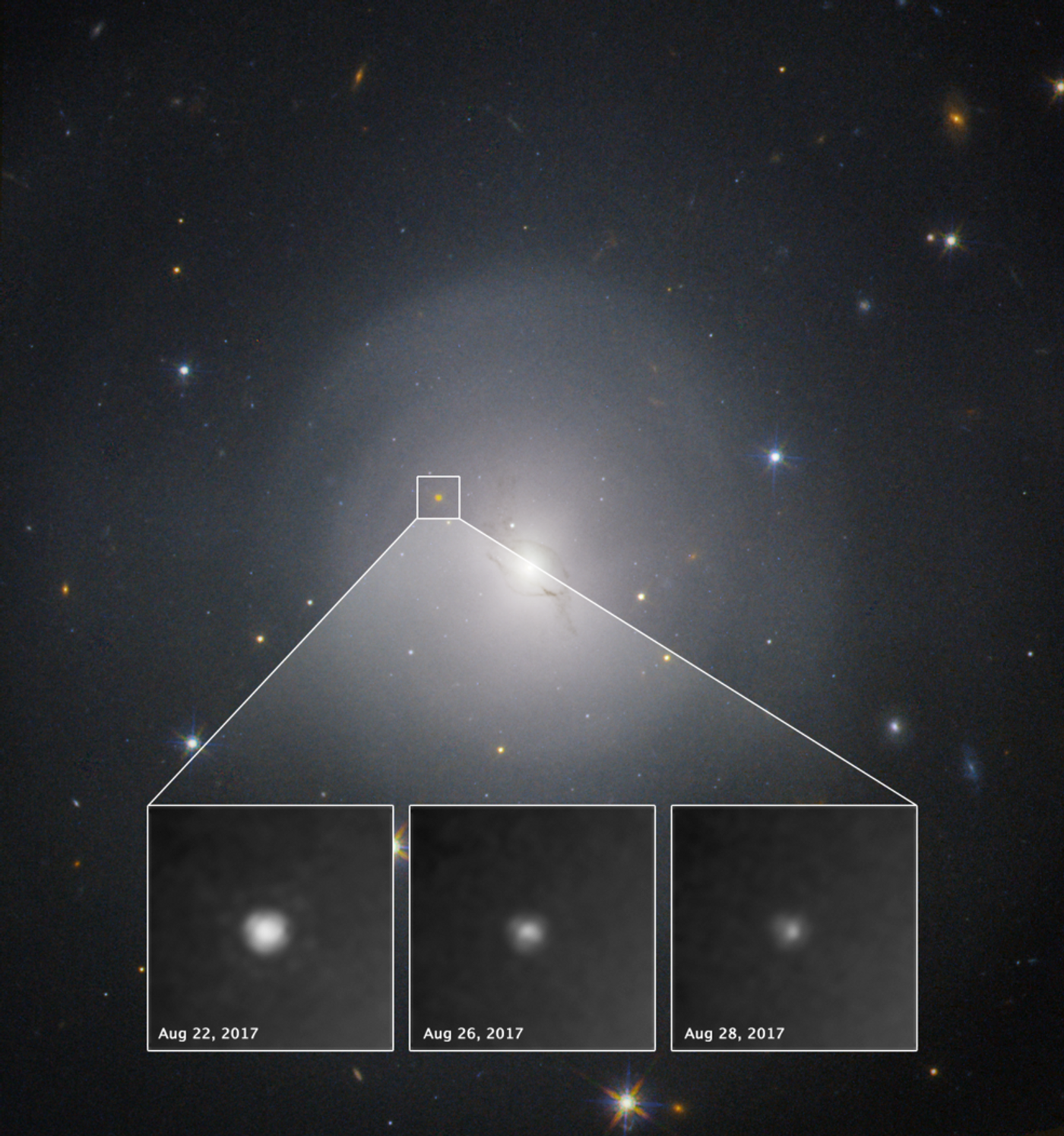Hubble Spies on Source of Neutron Star-Driven Gravitational Waves
It was just a few days ago that astronomers announced a breakthrough in gravitational wave research, and NASA has deployed the Hubble Space Telescope to capture additional data from their source after the fact.
Image Credit: NASA, ESA; acknowledgment: A. Levan (U. Warwick), N. Tanvir (U. Leicester), and A. Fruchter and O. Fox (STScI)
On August 17th, two neutron stars forming a binary system in a galaxy almost 130 million light years away would get so close to one another that tidal forces prompted them to merge into one. It was the first time astronomers ever captured gravitational waves occurring from something besides two black holes slamming into one another.
Related: Astronomers capture gravitational waves from a binary black hole merging into one
The resulting merger unleashed powerful gravitational waves through space-time that set off several Earth-based detectors, and the unique circumstances surrounding the event even enabled astronomers to study the aftermath in visible light.
While various telescopes situated right here on Earth's surface aided astronomers in studying what was left, NASA’s Hubble Space Telescope resides in space where we can achieve a considerably less obstructed view. Much of the data is still raw and requires further analysis, but it’s a start.
According to NASA, Hubble obtained vibrant images of the glowing aftermath, including feature-rich spectral data that can tell us more about the dense elements manufactured during the enormous kilonova explosion.
“We think neutron star collisions are a source of all kinds of heavy elements, from the gold in our jewelry to the plutonium that powers spacecraft, power plants, and bombs,” explained Andy Fruchter of the Space Telescope Science Institute.
“Beyond the fact that two neutron stars flung a lot of matter out into space, we’re not yet sure what else the spectrum is telling us. Because the material is moving so fast, the spectral lines are smeared out. Also, there are all kinds of unusual isotopes, many of which are short-lived and undergo radioactive decay. The good news is that it’s an exquisite spectrum, so we have a lot of data to work with and analyze.”
The images Hubble snapped also illustrate a dwindling light source from where astronomers believe the cataclysmic event took place. NASA refers to it as a “powerful wind of material speeding outward,” highlighting how there was a bunch of energy at the beginning, but how it calmed down and dissipated after time.
Experts can also discern from the images that we observed the region from above its orbital plane; this would explain why we saw more than just infrared light emitting from the source.
Because the Sun is now starting to obscure our view of the gravitational wave source, Hubble will take a small break from peeking the aftermath of GW170817. Observations will likely continue sometime in November after the Sun no longer obscures our view.
Special events fuel interest behind using the James Webb Space Telescope to observe the cosmos. Hopefully, it will help astronomers study these powerful forces of nature in more detail and realize a better understanding about them.
Source: NASA









